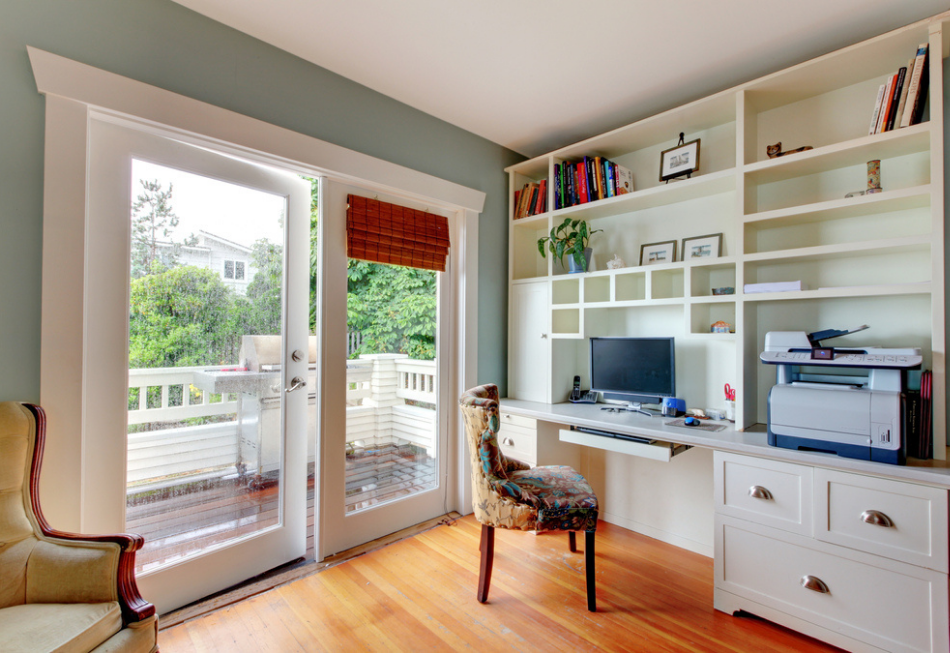As more people embrace the flexibility of working from home, the need for a dedicated and productive workspace has never been more apparent. Accessory Dwelling Units (ADUs) Offer an innovative solution to this challenge, providing a separate space that can be customized to suit your work needs while maintaining a healthy work-life balance. For those considering a Duarte ADU, designing a space that caters to work-from-home needs is essential. It’s about creating a productive, comfortable environment where you can focus and be at your best, blending functionality with the comforts of home.

Content
Design Principles for ADU Workspaces
When it comes to designing an ADU workspace for optimal productivity, several key principles come into play. Here are some essential design considerations to keep in mind:
1. Functionality Over Form
Prioritize functionality when selecting furniture and layout to ensure efficiency in your work tasks.
2. Adequate Lighting
Incorporate natural light sources whenever possible to create a bright and inviting workspace.
3. Personalization
Infuse your personality into the design through decor, color schemes, and personal touches that inspire creativity.
4. Organization Solutions
Implement storage solutions like shelves, drawers, and organizers to keep your workspace clutter-free and conducive to focus.
By adhering to these design principles, you can create an ADU workspace that not only meets your professional needs but also enhances your overall well-being while working from home.
Essential Features for Productivity
When designing an ADU for work-from-home productivity, incorporating key features can make a significant difference in creating a conducive environment.Here are some essential elements to consider:
Natural Light:
- Benefits: Natural light enhances mood and focus.
- Tips: Position work areas near windows, use sheer curtains to diffuse light, and consider skylights for additional brightness.
Functional Furniture:
- Importance: Ergonomic chairs and desks promote comfort and reduce strain.
- Recommendation: Invest in adjustable furniture that caters to individual preferences and needs.
Tech Integration:
- Significance: Seamless technology integration streamlines work processes.
- Suggestions: Ensure ample power outlets, high-speed internet connectivity, and ergonomic placement of devices for efficiency.
Organization Solutions:
- Advantages: Clutter-free spaces boost productivity and mental clarity.
- Ideas: Utilize storage solutions like shelves, baskets, or filing cabinets to maintain a tidy workspace.
Personalized Touches:
- Impact: Personalizing the space can inspire creativity and motivation.
- Examples: Incorporate artwork, plants, or inspirational quotes to infuse personality into the workspace.
By incorporating these essential features into ADU design for work-from-home setups, individuals can create a harmonious environment that maximizes productivity and enhances overall well-being.
Ergonomic Considerations
Creating an ergonomic workspace in your ADU is crucial for maintaining comfort and productivity during long work hours. Let’s explore some key ergonomic considerations to keep in mind:
Proper Desk and Chair Height:
- Desk Height: Ensure the desk height allows for comfortable typing and screen viewing without straining the neck or shoulders.
- Chair Height: Adjust the chair height so that your feet rest flat on the floor, promoting good posture and reducing lower back strain.
Monitor Placement:
- Eye Level: Position the monitor at eye level to prevent neck strain. Use a monitor stand if necessary to achieve the ideal height.
- Arm’s Length: Keep the monitor about an arm’s length away from you to reduce eye strain and maintain proper focus.
Keyboard and Mouse Setup:
- Wrist Position: Maintain a neutral wrist position while typing by keeping your wrists straight and elbows close to your body.
- Mouse Comfort: Use a mouse pad with wrist support to minimize strain on the wrist and forearm muscles.
Lighting Considerations:
- Avoid Glare: Position your desk perpendicular to windows to prevent glare on your screen, which can cause eye fatigue.
- Adjustable Lighting: Opt for adjustable lighting options, such as desk lamps with dimmer switches, to customize brightness levels based on task requirements.
Ultimately, the goal of designing an ADU for work-from-home is not just about aesthetics but about optimizing your space to support your professional endeavors. With thoughtful planning and attention to detail, you can craft a workspace that inspires innovation and propels your remote work success to new heights.

Thomas is a home improvement blogger who strives to improve his life and the lives of others. He provides homeowners with helpful tips on how to renovate their homes. His goal is not only to provide easy-to-follow instructions, but also share his own personal experiences for those seeking guidance.


